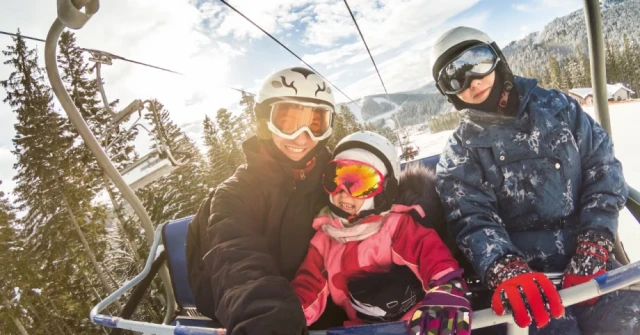
Your body needs 5-10 min of aerobic and muscular endurance activity to prepare for exercise. Remember, you’re hopefully hitting the slopes in the morning for a full day of fun. Your body has been resting all night, and your muscles and heart need to transition from a state of rest to one of activity.
What exercises should I do to warm up?
- Jumping jacks
- Frankenstein’s: While standing, keep the left knee straight and lift that leg up to touch your left hand while balancing on your right leg. Do the same with your right leg and hand. You should feel your hip flexors kick in, as well as some stretching in your hamstrings
- Standing leg swing: Standing on the left leg, keep your right leg straight and swing it forward and backward. Do this 10 times and repeat with the opposite leg. Repeat the cycle 2 times.
- Squats: Keeping your feet flat and your weight as much on your heels as you can perform a squat 20-25 times. Get those gluteal and quads working to prepare for landings. Want to do something a little more progressed? Squat and then from that position perform a vertical jump, then as your landing go straight into a squatting position. Repeat this 15-20 times. This works the entire leg, as well as your calf muscles.
- High knees with trunk twist: While standing, lift your left leg up and touch your left knee to your right elbow. You should feel your abdomen twist and flex. Repeat with the opposite side. You need to prepare your body for possible twisting activities
- Scissor kicks: Lying on your back, keep your knees straight and raise your legs 2-3 in off the ground. Then perform rapids kicks like you would swimming in a pool. Great way to activate your entire core, from your abdominal muscles to your legs
- Buttock kicks: lightly jog and as you do touch your heels to your buttocks. If you do this correctly, you should feel a light stretch in your quadriceps with each kick.
- Rotating lunges: As you perform a lunge twist your body in the direction of the leg that is in front.
Also, if you have never participated in skiing or snowboarding before if available take a quick class on the basic techniques as well as learning proper falling techniques. Many injuries from these activities come from improper falling habits, such as shoulder and wrist injuries.
Do a light cool-down including some stretches post-exercise: Perform light aerobic activities such as slow jogging or walking for 5-10 to help your heart rate, blood pressure, and metabolic systems transition to rest. This also helps decrease the amount of muscle soreness. End your day by stretching your muscles. This includes, but is not limited to, your gluteals, hip adductors, quadriceps, hamstrings, Tensor fascia latae and IT band, as well as calf muscles.
What activities will help get me ready for my skiing/snowboarding trip?
Buying the right equipment that fits! See someone who specializes in this equipment to make sure you have the supplies you need. Equipment such as a properly fitting helmet can help reduce the risk of severe injury.
Strengthening exercises: This will help your body prepare for the different stresses on your body, and decreases your risk of injury. Examples of exercises include:
- Squats
- Lunges (Forward, backward, side/side)
- Russian twists
- Scissor kicks
Balance exercises: Balance has been shown in several studies to correlate with a decrease in injury and fall risk. Examples of balance activities include:
- Stand on one leg and hold for 30 seconds. Repeat 2-3 times. If too easy, close your eyes.
- Stand on a soft surface. We use a foam pad here in the clinic but can use a pillow or sofa cushion. Can start feet together, and then hold for 30 seconds. If too easy, progress to one leg with eyes open then may progress to eyes closed.
- Standing Leg swings: try to do these without the swinging leg having to touch the ground. This increases your dynamic balance with movement
- Single leg jumping: Can do side/side and forward/backward.
Cardiovascular exercise:
- American College of Sports Medicine recommends 30-60 min of moderate exercise at least 5 days per week. For people just getting started, even 20 minutes per day of light exercise can be beneficial.
- Regular cardiovascular exercise can decrease your risk of injury, reduce your cholesterol, reduce the risk of diabetes, reduce your blood pressure, and increase your lung capacity.
- Work with your medical doctor to help develop a fitness program that is appropriate for you!
Sources: ACSMs resource manual for Guidelines for exercise testing and prescription. 9th ed. Philadelphia: Wolters Kluwer Health/Lippincott Williams & Wilkins; 2014.
Back




Leave a Comment